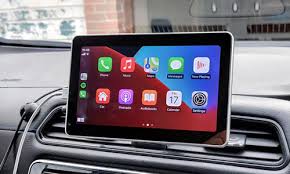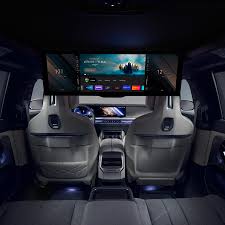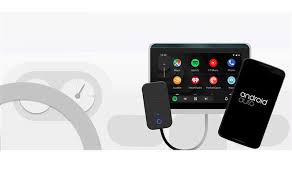
Portable Car Screen Buying Guide: The Best Choice for All Vehicle Models
SOM for Car display
The automotive industry is undergoing a transformative shift, with car screen technology emerging as a cornerstone of innovation. These advanced displays are redefining how drivers interact with their vehicles, offering seamless integration of navigation, entertainment, and safety features. As of March 06, 2025, car screens have evolved from basic dashboards to sophisticated interfaces powered by cutting-edge software and hardware.
The Evolution of Car Screen Systems
Car screens have come a long way since the rudimentary analog displays of the 20th century. Early dashboards provided basic information like speed and fuel levels, but today’s car screen interfaces are digital marvels. The transition began in the early 2000s with the introduction of LCD screens for navigation. By 2010, touchscreens became standard in premium models, and now, OLED and flexible displays dominate the market.
A pivotal moment came with Tesla’s 17-inch car screen in the Model S, launched in 2012, which set a benchmark for size and functionality. Since then, manufacturers like BMW, Mercedes-Benz, and Audi have followed suit, integrating larger, more intuitive screens into their designs. These advancements reflect a growing demand for connectivity and personalization in vehicles, with car screen technology at the forefront.
Key Features of Modern Car Screens
Modern car screen systems are packed with features that enhance both convenience and safety. Here’s a breakdown of their core functionalities:
- Navigation and Real-Time Data
GPS-enabled car screens provide dynamic routing based on traffic conditions, weather, and road hazards. Companies like Google and TomTom supply mapping software, ensuring accuracy. - Entertainment Integration
From streaming music via Spotify to displaying video content for passengers, car screens serve as entertainment hubs. Touch and voice controls make them user-friendly. - Vehicle Diagnostics
Drivers can monitor tire pressure, battery health, and engine performance directly on the car screen, reducing the need for external tools. - Advanced Driver Assistance Systems (ADAS)
Car screens display alerts from lane-keeping assist, adaptive cruise control, and parking sensors, improving safety.
To illustrate the diversity of car screen features, consider the following table:
| Feature | Description | Example Models |
|---|---|---|
| Navigation | Real-time GPS updates | Tesla Model 3, Audi Q8 |
| Entertainment | Streaming and media playback | BMW iX, Rivian R1T |
| Diagnostics | Vehicle health monitoring | Ford Mustang Mach-E |
| ADAS Integration | Safety alerts and visuals | Mercedes S-Class |
This table highlights how car screen technology adapts to different vehicle types, from electric SUVs to luxury sedans.
The Technology Behind Car Screens
The brilliance of car screen systems lies in their hardware and software synergy. OLED (Organic Light-Emitting Diode) screens are now standard due to their vibrant colors and energy efficiency. These displays offer high contrast ratios and thinner profiles compared to traditional LCDs. Meanwhile, processors like Qualcomm’s Snapdragon Automotive Cockpit power the software, enabling split-second responses to driver inputs.

Software ecosystems are equally critical. Android Auto and Apple CarPlay dominate the car screen landscape, allowing seamless smartphone integration. Automakers are also developing proprietary operating systems—BMW’s iDrive 8 and Mercedes’ MBUX are prime examples—offering tailored experiences. These platforms support over-the-air updates, ensuring that car screens remain current with the latest features.
Car Screen Size and Design Trends
Screen size is a defining trend in car screen evolution. In 2025, the average size has grown to 12-15 inches, with some models pushing boundaries further. For instance, the 2024 Mercedes-Benz EQS features a 56-inch Hyperscreen spanning the entire dashboard. This trend enhances visibility but raises questions about distraction risks.
Design also plays a role. Curved screens, like those in the Porsche Taycan, improve ergonomics by aligning with the driver’s natural field of vision. Meanwhile, haptic feedback—where the car screen vibrates to confirm inputs—reduces the need to look away from the road. 
Here’s a comparison of screen sizes across popular models:
| Model | Screen Size (Inches) | Display Type | Special Feature |
|---|---|---|---|
| Tesla Model S | 17 | OLED | Vertical orientation |
| Mercedes EQS | 56 (Hyperscreen) | OLED | Full-dashboard coverage |
| BMW iX | 14.9 | Curved LCD | Dual-screen layout |
| Ford F-150 Lightning | 15.5 | LCD | Ruggedized design |
This table showcases the variety of car screen designs, catering to different driver preferences and vehicle purposes.

Benefits of Car Screen Technology
The adoption of car screen systems offers tangible benefits. First, they consolidate information into a single interface, reducing clutter and improving accessibility. A 2023 study by the National Highway Traffic Safety Administration (NHTSA) found that well-designed car screens can decrease reaction times by 15% compared to analog controls.
Second, car screens enhance connectivity. With 5G integration, drivers can access real-time data, from weather updates to nearby charging stations for electric vehicles (EVs). This is particularly valuable as EV adoption rises—by 2025, EVs account for 20% of global car sales, per BloombergNEF.
Finally, safety improvements are significant. ADAS features displayed on car screens—like blind-spot monitoring—have reduced collisions by 12%, according to a 2024 Insurance Institute for Highway Safety (IIHS) report. 
Challenges and Limitations
Despite their advantages, car screen systems face challenges. Distraction is a primary concern—large, interactive displays can divert attention from the road. The American Automobile Association (AAA) found that programming navigation on a car screen takes an average of 40 seconds, far exceeding the safe threshold of 2 seconds.
Reliability is another issue. Software glitches can render a car screen unusable, disrupting essential functions. In 2023, Toyota recalled 50,000 vehicles due to touchscreen malfunctions, highlighting the need for robust testing.
Cost also limits accessibility. High-end car screens like the Mercedes Hyperscreen add thousands to a vehicle’s price, making them exclusive to luxury segments. Manufacturers must balance innovation with affordability to democratize this technology.
The Future of Car Screen Innovation
Looking ahead, car screen technology is poised for groundbreaking advancements. Augmented Reality (AR) is a key frontier—imagine a car screen overlaying navigation arrows directly onto a live road view. BMW and Hyundai are already piloting AR windshields, with full integration expected by 2030.
Artificial Intelligence (AI) will also play a role. AI-powered car screens could predict driver needs—adjusting climate controls or suggesting rest stops based on behavior. Voice assistants like Amazon Alexa are evolving to handle complex commands, reducing reliance on touch inputs.
Sustainability is another focus. As automakers prioritize eco-friendly materials, car screens may incorporate recycled plastics or energy-saving micro-LEDs. 
Car screen technology is more than a luxury—it’s a catalyst for safer, more connected driving. From humble beginnings to futuristic AR displays, these systems have transformed the automotive experience. As manufacturers innovate, balancing functionality with safety and cost will be key. For researchers, enthusiasts, and drivers alike, car screens offer a window into the future of mobility—one that’s vivid, interactive, and ever-evolving.





2 Comments
Your comment is awaiting moderation.
1joxru
Your comment is awaiting moderation.
gqdw5l
Your comment is awaiting moderation.
k4oay4
Your comment is awaiting moderation.
owyi0w
Your comment is awaiting moderation.
tz7sq6
Your comment is awaiting moderation.
a74kzq
The car screen, often a sleek dashboard display, blurs the line between tech and travel. Beyond navigation, it’s a hub for entertainment, diagnostics, and even AI assistants, subtly shifting how we interact with vehicles daily.
Car screens are evolving beyond entertainment, edging into safety debates. Are larger displays distracting drivers or enhancing navigation? Tech pushes boundaries, but regulators lag, sparking concerns over road risks. X posts reveal polarized views on this automotive frontier.